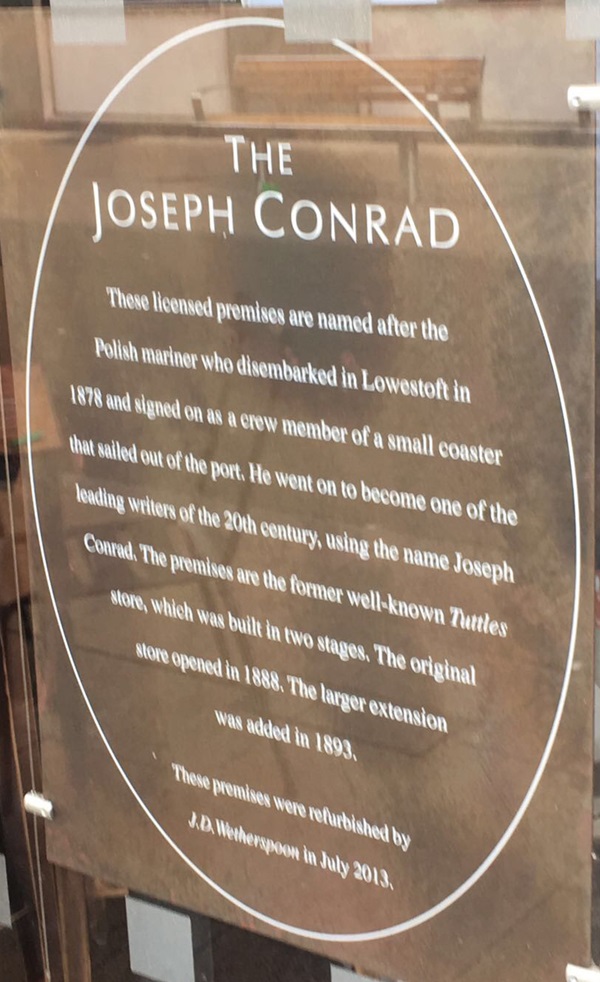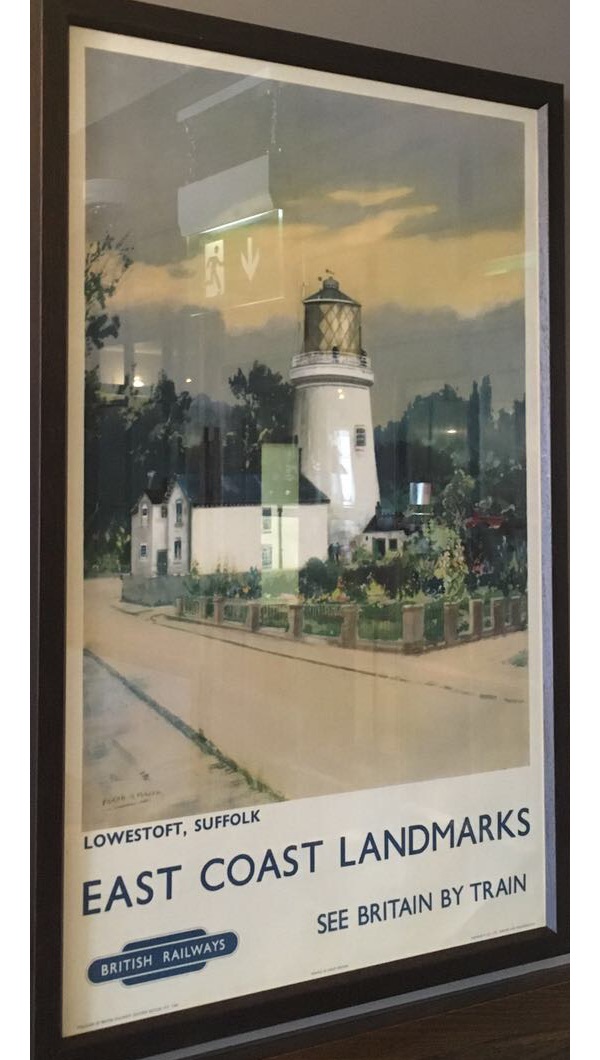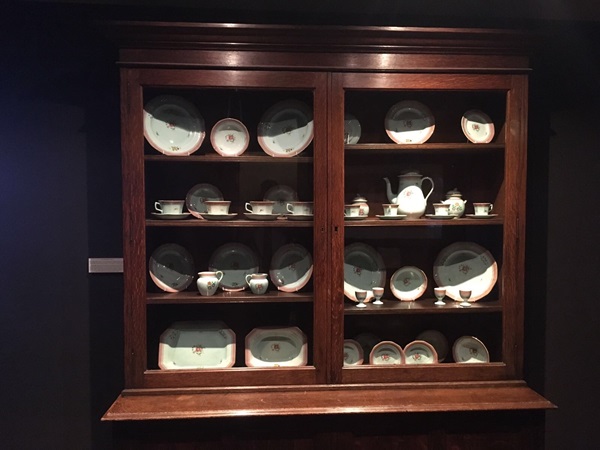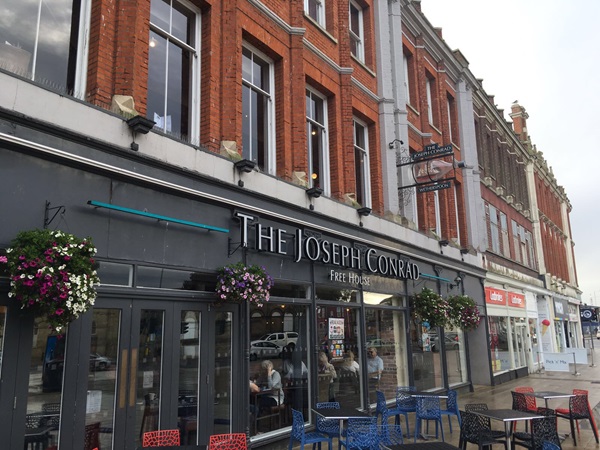When Jozef Teodor Konrad Korzeniowksi disembarked in Lowestoft, in June 1878, he could not speak a word of English. The Polish mariner then signed on as a crew member of the Skimmer of the Sea, a small coaster which sailed out of Lowestoft. Korzeniowksi received his first English lessons from the ship’s master and went on to become famous as Joseph Conrad, one of the leading writers of the 20th century. Much of Conrad’s highly acclaimed work was inspired by his long career at sea, including his novel Lord Jim – twice adapted as a film.
A plaque documenting the history of The Joseph Conrad.

The plaque reads: These licensed premises are named after the Polish mariner who disembarked in Lowestoft in 1878 and signed on as a crew member of a small coaster that sailed out of the port. He went on to become one of the leading writers of the 20th century, using the name Joseph Conrad. These premises are the former well-known Tuttles store, which was built in two stages. The original store opened in 1888. The larger extension was added in 1893.
These premises were refurbished by J D Wetherspoon in July 2013.
An illustration and text about The Joseph Conrad.

The text reads: The Joseph Conrad is named after the Polish author who disembarked at Lowestoft in June 1878, not speaking a word of English. Born Jozef Teodor Konrad Korzeniowski on 3 December 1857, he was sent by his father to France in 1874 for a planned career with the merchant navy. He spent four years in France then joined the British Merchant Marine and signed on as a crew member of the “Skimmer of the Sea” which sailed out of Lowestoft. Conrad received his first lessons in English from the ship’s master and served for fifteen years under the Red Ensign. Most of Conrad’s stories and many of his literary characters were drawn from events in his seafaring career and actual persons he had met.
The Joseph Conrad is situated on the corner of Station Square and Waveney Road, known locally as “Tuttles Corner”, after the Tuttles Bon Marche Department Store, which was located at the premises from the late 19th century until its closure in 1981. The Tuttles store, constructed on the former Grove Estate, was acquired by Messrs H Tuttle and Son in 1886 and was opened in 1888 but the history of the firm dates back to 1843.
Mr Henry Tuttle opened a grocery and provision shop in 1843 but by 1950 these premises seemed too small and he re-located to 58 High Street. In 1855 a branch establishment was opened in Raglan Street but here the original experience of Mr Tuttles was repeated and these premises were soon too small and he relocated to Denmark Road, where the drapery department was added. The continued expansion of the enterprise compelled another removal and when the property of 4 Commercial Road came onto the market in 1866 Henry purchased this site.
During 1876 Henry’s son, Ebenezer Tuttle became his father’s business partner and it was largely down to him that the company acquired this building occupied by The Joseph Conrad. Tuttles continued to increase and in 1890 the firm added the mantle room and dress making departments and in 1897 the whole building was refitted including departments for; “laces, haberdashery, hosiery occupying the left section, gloves and ribbons to the front, wools, gents’ hosiery, buttons and trimmings to the right, with private and general offices in the centre. A central staircase leads to the millinery and the ladies’ and children’s departments on the first floor”. Ebenezer was elected as a Town Councillor in 1891 and was raised to the Aldermanic bench in 1895.
A poster advertising the British Railways.

This is an original first edition promotional poster for British Railways, dating from 1958 and is an offset colour lithograph print. It was part of a set entitled east Coast Landmarks, this one clearly showing the lighthouse at Lowestoft. The artwork used in the poster was taken from an original oil painting by Frank Mason, who was commissioned by British Railways (Eastern Region) to produce this and other artworks for the series.
A photograph of Ebenezer Tuttles, the chairman and managing director of Tuttles – also the mayor of Lowestoft 1904–06.

A collection of Lowestoft Pattern China.

This Calyx Ware dinner set was produced by William Adams & Sons, Staffordshire and is an early version of the popular Lowestoft pattern.
The design features hand-painted floral sprays surrounded by the signature Lowestoft Border. The Calyx Ware name and the Lowestoft Pattern, whilst first produced in the late 19th century, continued well into the 20th century and sets of this type would have certainly been sold in the Tuttles from its opening day in 1888.
External photograph of the building – main entrance.

If you have information on the history of this pub, then we’d like you to share it with us. Please e-mail all information to: pubhistories@jdwetherspoon.co.uk